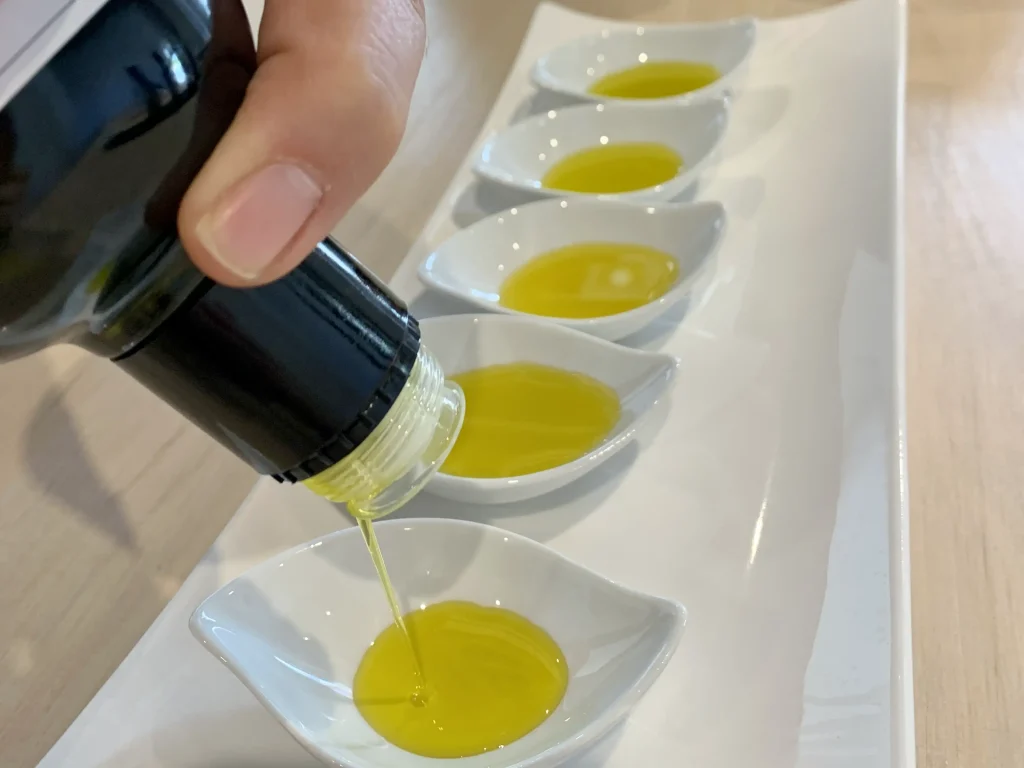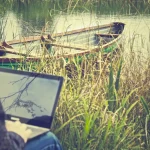Before arriving in Croatia, I was traveling in many countries learning about wellness practices in different parts of the world. I’m interested in how people think about their wellbeing and what role culture plays. From temazcal in Mexico to a curandera in Colombia, Reiki in Japan, and more, I experienced a variety of indigenous modalities.
Once here, I looked for Croatia’s offer beyond the popular Mediterranean diet and the outdoor lifestyle. Initially, nothing seemed exceptional, but over time I noticed a pattern. Nature blessed Croatia with abundant resources and people are adept at cultivating them and producing goods. I’m talking about food, wine, rakija, and herbal, beauty, and medicinal products. It’s a way of life that a surprising number of people embrace; usually for personal/family use and often as a side hustle. While I can talk long about the (delicious) consumables, the plant-based treatments are equally intriguing.
Plant products
Hvar’s annual lavender festival was my introduction to Croatia’s natural, homemade products and the women who make them. Kantarion (St. John’s Wort), smilje (immortelle), nevin (calendula), and of course lavanda (lavender) grow wild here and they’re main ingredients in various creams, balms, lotions, oils, and soaps. Numerous healing/soothing/preventative benefits can be derived from these plants. Commercial products containing these ingredients are sold around the world, but here you can find them made in kitchens and backyards—fresh, clean, and devoid of additives, preservatives, and unpronounceable chemical components.
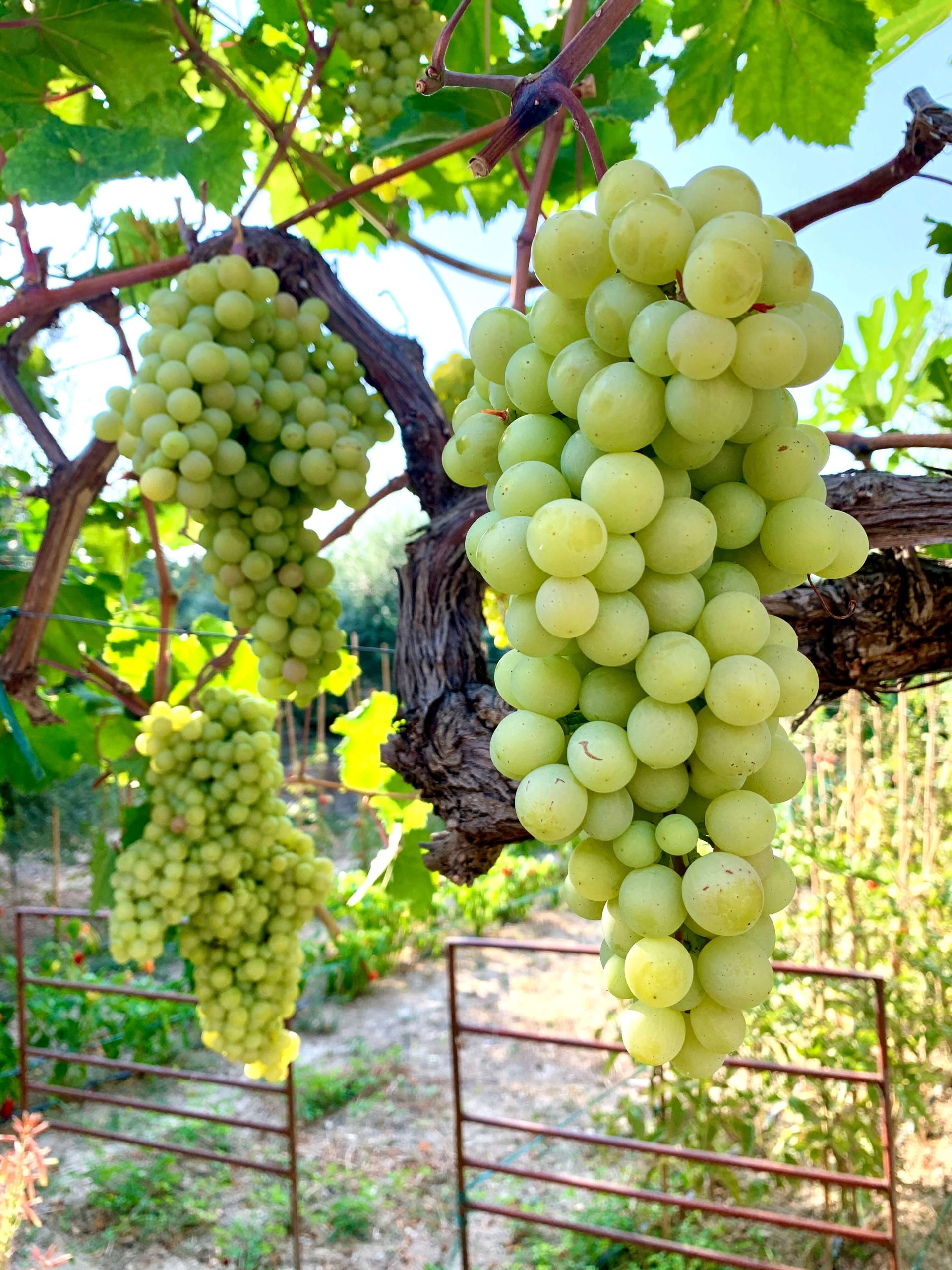
Grapes grow abundantly near the Adriatic coast. The climate provides unique characteristics that help Croatian wines routinely win awards in international competitions.
What’s the big deal, you may ask? For starters, a lot of women know the plants here—where to find them, how to work with them, and how they keep the body and skin in good working order. Their healing remedies and beauty tonics are in the family medicine cabinet. By the way, have you noticed how many Croatian women have beautiful, supple skin? That brings me to the next point—these things work.
Here are two women with very different stories and motivations for getting into plants.
Hag Made
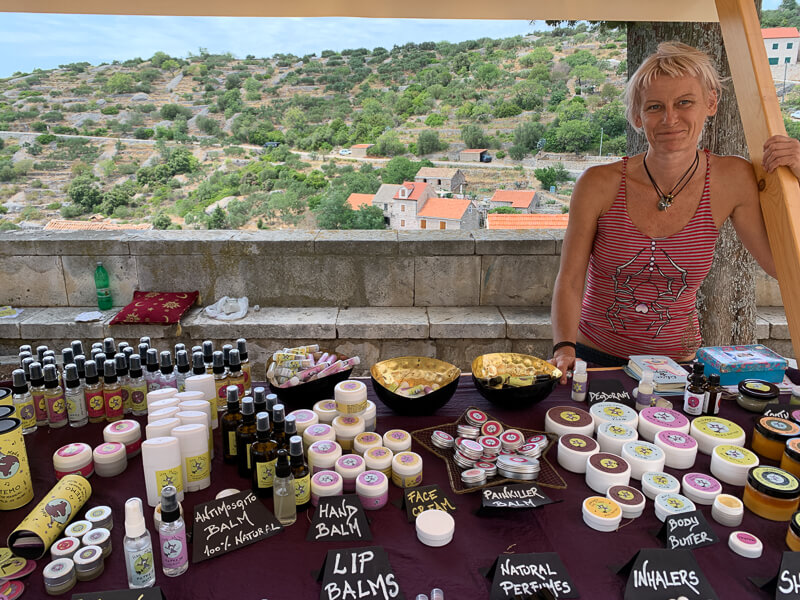
Ivana Magdalenić with some of her products at Hvar’s annual lavender festival.
Ivana Magdalenić made her first remedy eight years ago to help a friend with a foot injury. After lots of research and tinkering with a recipe, she found the right mixture that healed her friend’s wound. Ivana realized she had a knack for working with plants and she went on to create a natural product line that treats a range of issues—from acne to burns, wounds, scars, psoriasis, wrinkles, joint pain, and more.
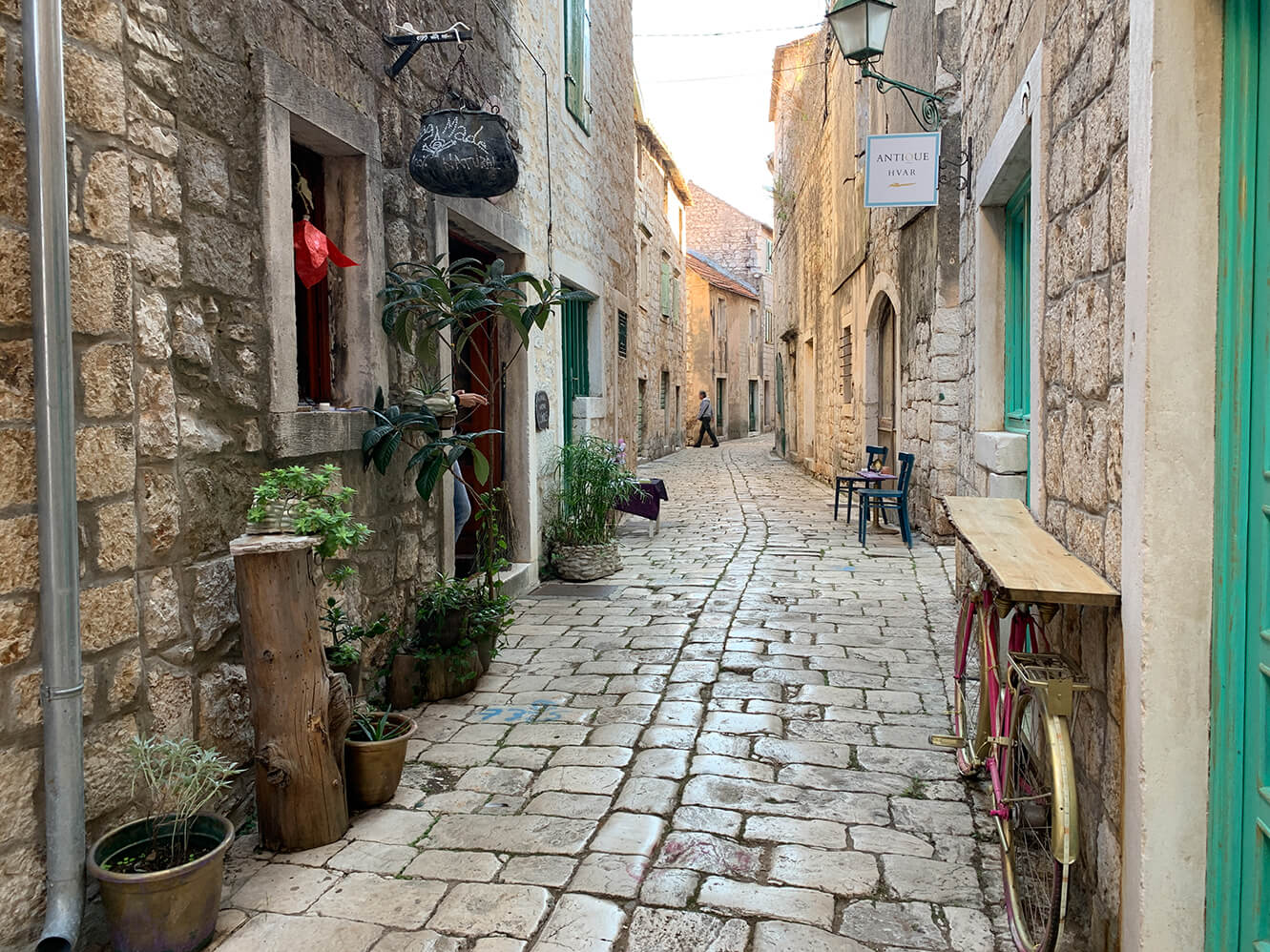
Ivana sells her complete line of Hag-Made products at her shop in Stari Grad, Hvar.
Her company name, Hag Made, is a charming wordplay on hand-made and was inspired by a dream about witches brewing over a cauldron. In this narrative, Ivana is a “good witch” who creates healing potions from the heart. I used her Kantarion Plus on some acute burns and within a few days I stared at my skin in disbelief at the marked difference in appearance along with the pain relief. Her Smilje cream gave my skin that Cro dewiness overnight.
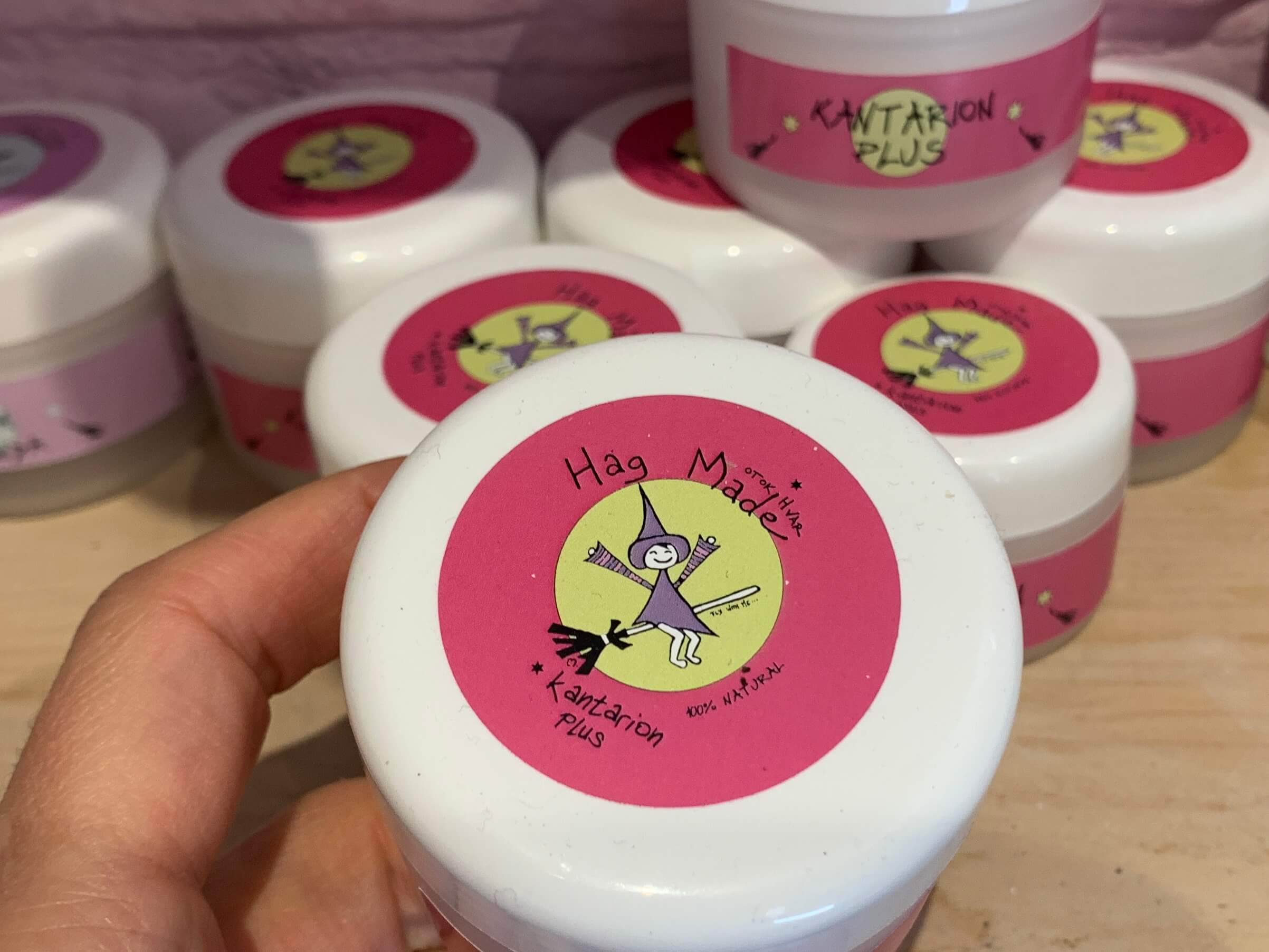
Hag-Made Kantarion Plus has strong anti-inflammatory properties and worked miracles on the author’s badly burned skin.
Everything Ivana uses grows naturally on Hvar, where she’s from, and she knows the difference between a plant that comes from the south side of the island where the sun is more intense versus plants on the north side. It’s an important distinction because product quality and effectiveness are priorities; nothing is sold without being tested. She’s part artist, musician, inventor, and free spirit who seems to have a special connection to the earth’s energy, which undoubtedly guides her business.
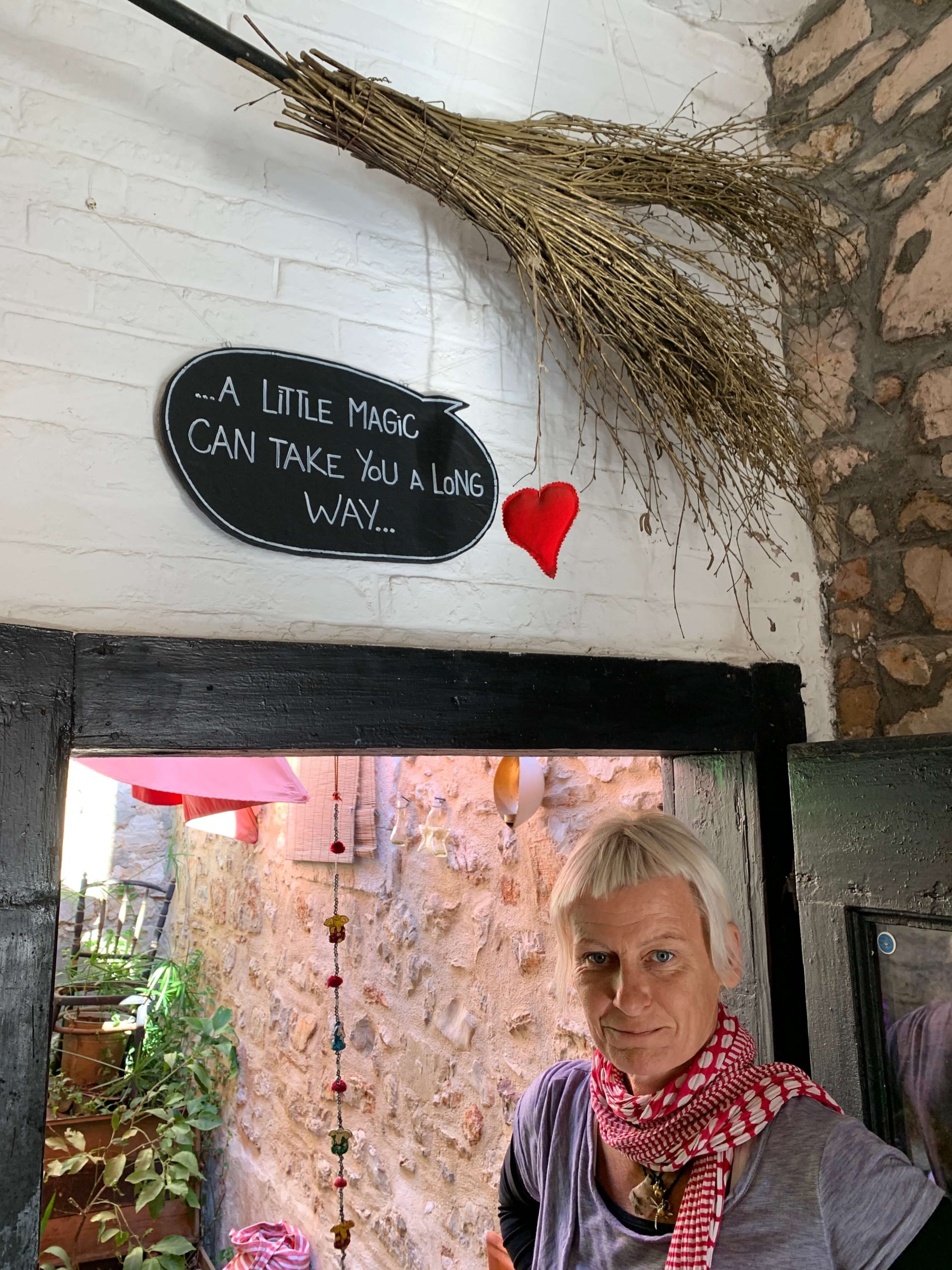
Ivana in her shop, near the door leading to the outdoor garden where she enjoys coffee and the company of friends.
Grandma Ruža
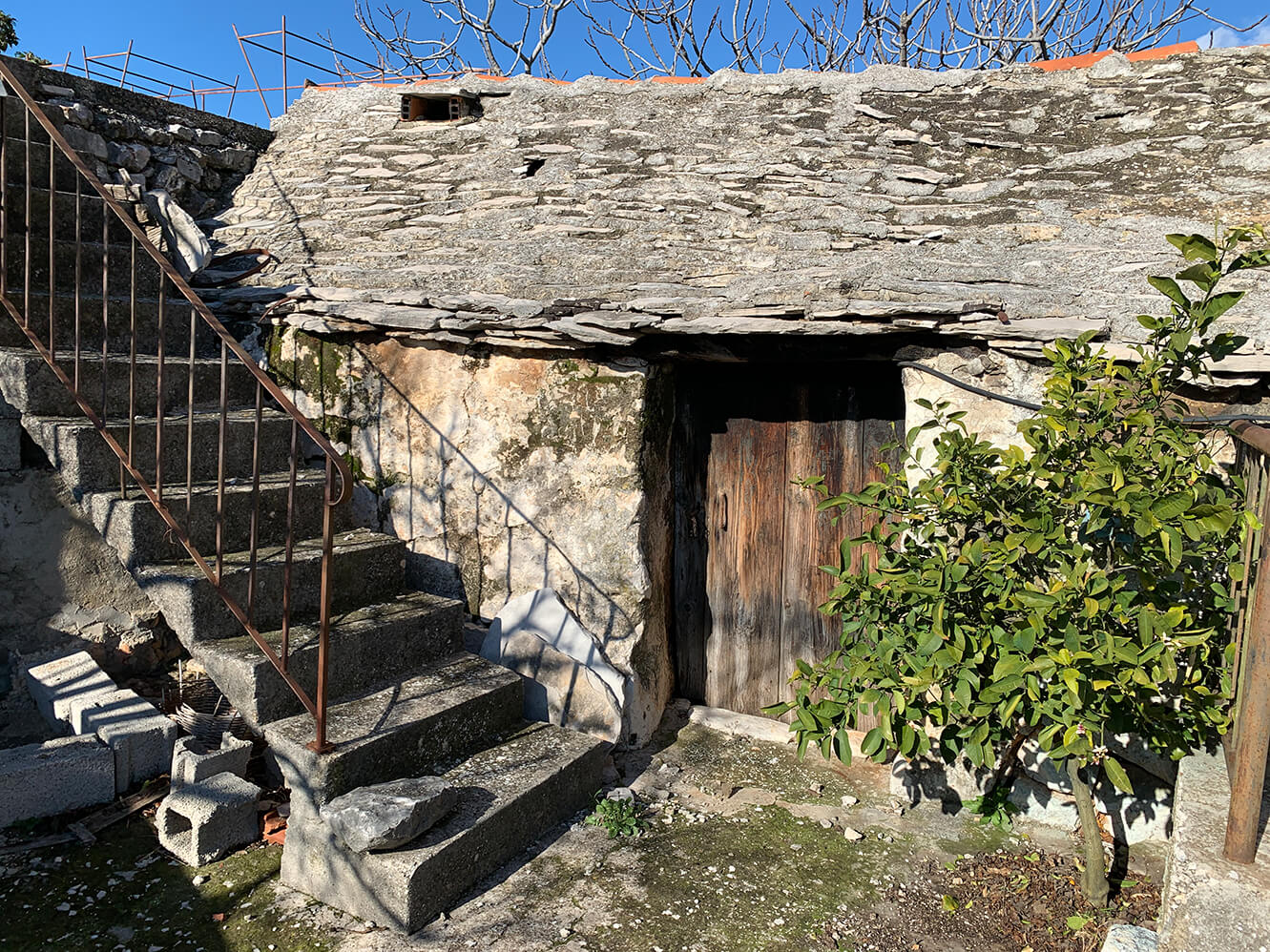
Grandma Ruža’s childhood house in Gustirna, near Trogir.
Conversations about healing often include somebody’s grandmother and Grandma Ruža is a queen. She’s been making oils and creams with kantarion, smilje, and nevin (calendula) for decades. She administers these for sunscreen, sunburn, wounds, hemorrhoids, cuts… for anything, she tells me. She’s been known to pan-fry dried chamomile flowers in olive oil to make chest wraps for reducing colds and inflammation, and she brews tea from various herbs to improve assorted ailments. To relieve her rheumatism, Grandma Ruža visits a secret location on Šolta where she smears the black mud on her entire body and face; home-made rakija infused with herbs helps too. Funny.
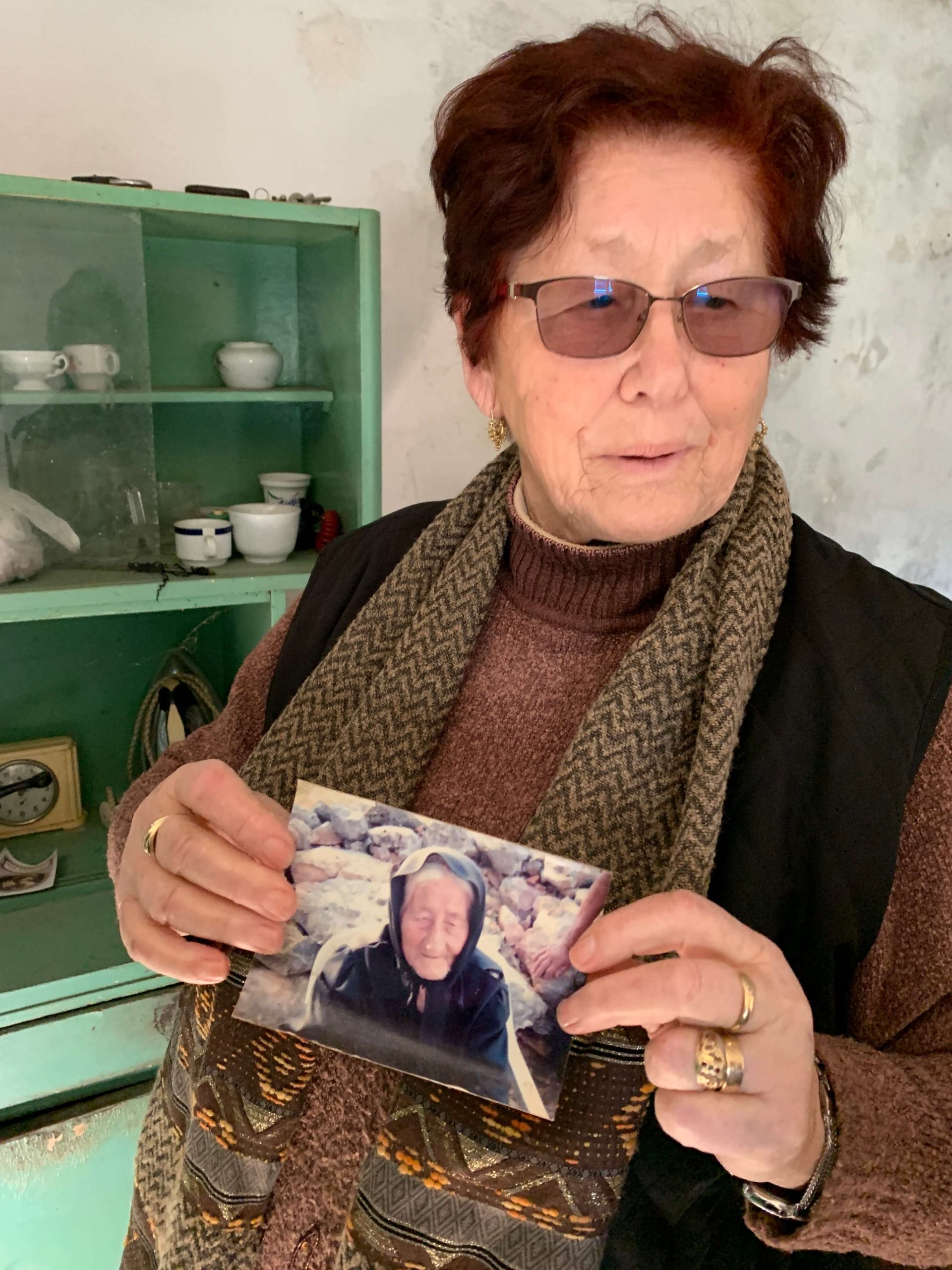
Grandma Ruža with a picture of her mother.
Her range of knowledge comes from life experience. Growing up at the end of World War II in the countryside near Trogir, people in the villages survived off agriculture. She was on the front line with her mother for handling plants and animals and producing a long list of food—meat, cheese, vegetables, oils, herbs, wine, and brandy. When Grandma Ruža quit school at age 10 to work and help take care of the family, her hands-on education on plant medicine began too.
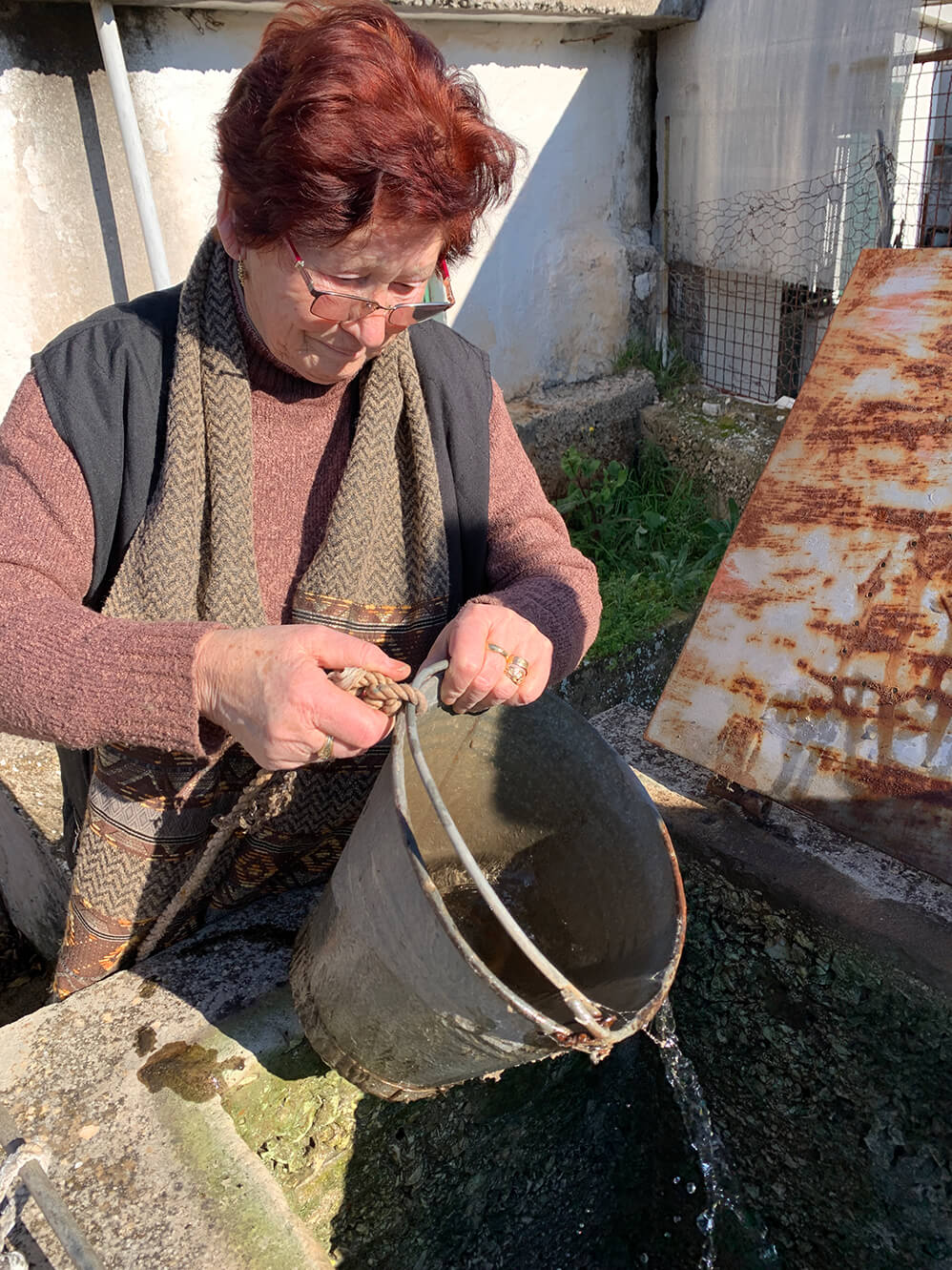
Grandma Ruža cleaning up in the yard around her childhood home.
She regularly picked sage, immortelle, and wormwood, and tree fruits including oskoruša (used as medicinal tea for stomachaches and constipation) and maginje (a Croatian “strawberry” containing high amounts of vitamin C and dietary fiber)—some of the more direct healing plants. Today, she’s still going strong and the family still benefits from her preparations.
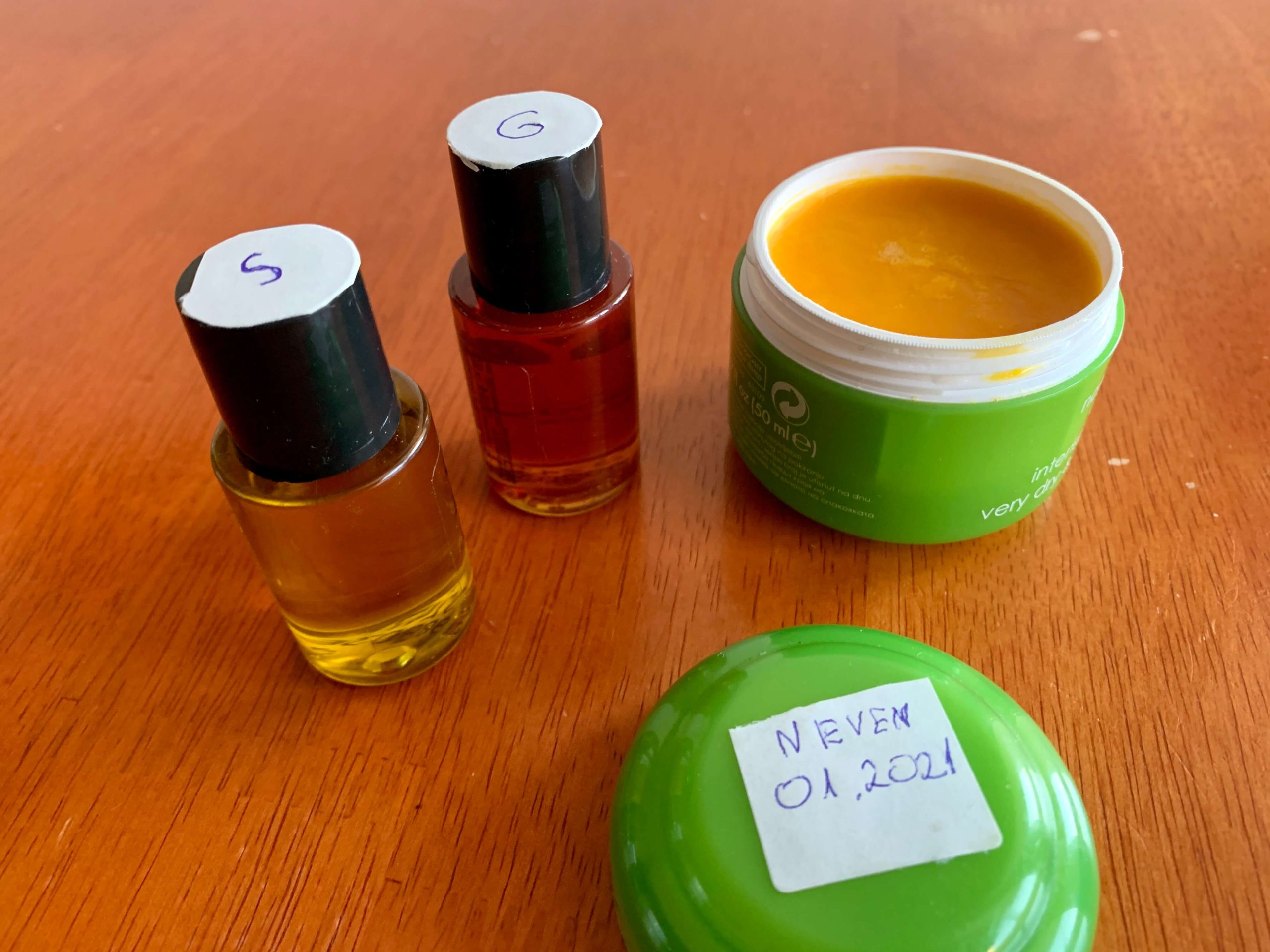
Recycled containers come in handy for Grandma Ruža’s homemade oils and balms, which the whole family uses.
Natural fortunes
Not many places in the world have Croatia’s diversity or abundance of natural resources that provide food, nutrition, and healing. I’m not sure how many Croatians realize their good fortune in this regard, but it seems obvious to me, and it feels like I’m constantly learning about a new food or plant here that provides some benefit.
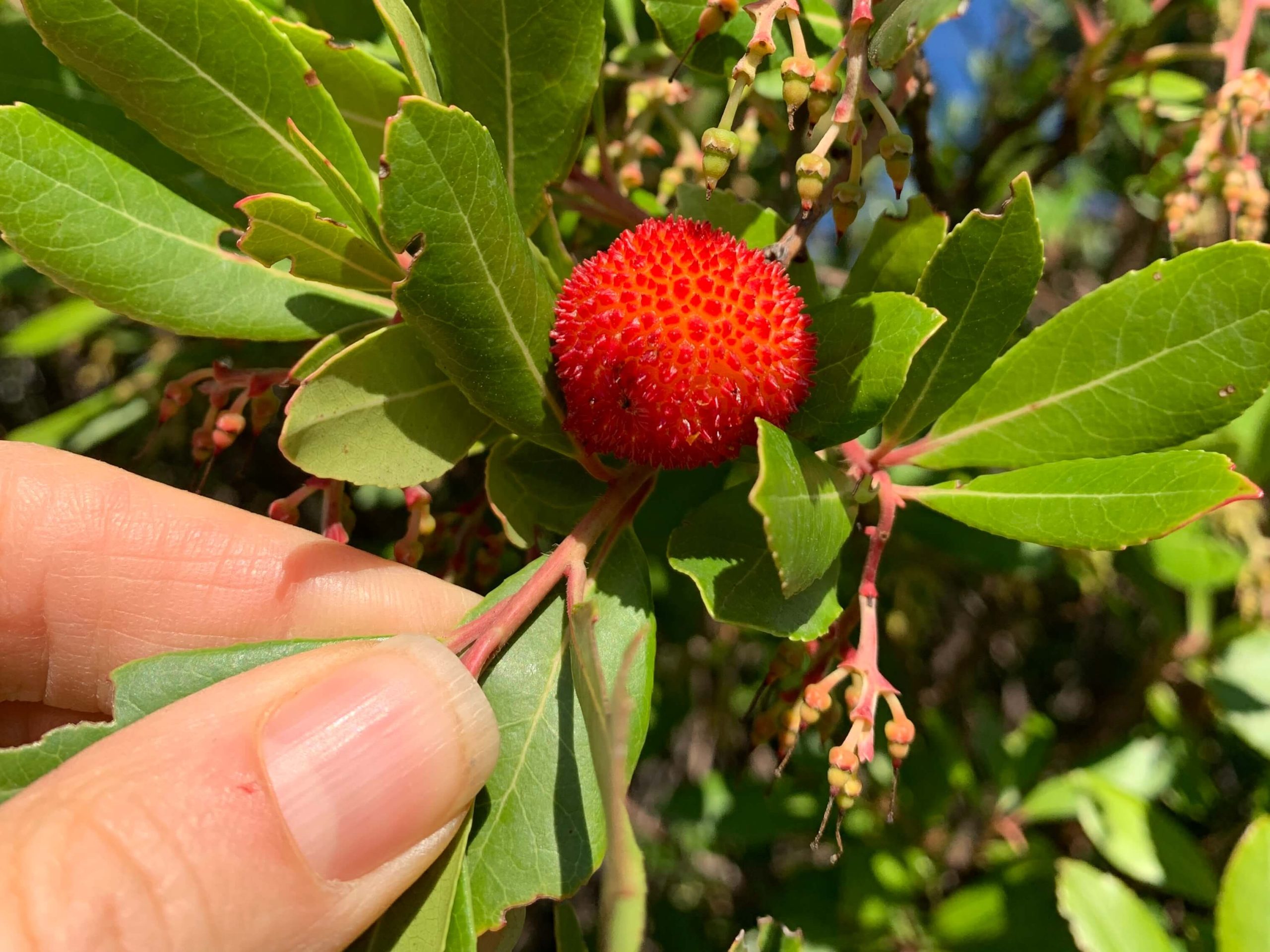
Maginje fruit are called Croatian strawberries. Although the shape, texture, and taste are different from typical garden strawberries, their health benefits are similar. Unlike the garden variety that grows in plants low to the ground, maginje grows wild in trees and in great quantity.
To be able to produce food with readily available, indigenous vegetation, animals, and other means AND nourish your body (hello Mediterranean diet) AND heal your ailments, seems like a triple win. I’m glad to have found Croatia’s natural wellness; to my mind it enhances everyone’s prospects for healthy living.
For more of Cyndie’s experiences, check out her Croatia Through the Eyes of a Digital Nomad column.
Are you an expat in Croatia who would like to share your experiences during the pandemic in Cyndie’s video series? If yes, please contact her on cyndieburkhardt@me.com
We are also keen to interview any digital nomads who have successfully applied for the new visa, after the first success in Istria – Meet Melissa Paul, Owner of Croatia’s First Digital Nomad Visa. Please contact us on news@total-croatia-news.com Subject Nomad Visa.

